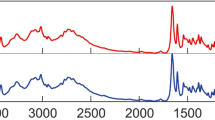Abstract
A metrological technical specification for the purity assessment of organic pure substance certified reference materials (CRMs) in China was formulated based on the practical experience from CRM developers, comments from experts, the “IUPAC Organic Purity Technical Report—Methods for the SI Value Assignment of the Purity of Organic Compounds”, and other references. After review by the national metrological technical committee for reference material and other experts in China, the specification was issued as JJF 1855–2020 in 2020. The specification describes the principles, requirements and practical guidelines for the purity assessment of organic pure substance CRMs, such as mass balance, quantitative nuclear magnetic resonance, differential scanning calorimetry, coulometry, titrimetry and external standard calibration. It also describes the combination for results and uncertainties for different methods. In which, the classification of mass balance method into three types and the combination approach of value and uncertainty, especially suitable for the purity assessment are firstly introduced. The introduction of the consideration during formulation for each important section in the specification is inspirational and instructive to developers of organic pure substance CRMs around the world.
Similar content being viewed by others
References
JJF1855–2020 (2020) Technical specification for purity assessment of certified reference materials - organic purity certified reference materials. State Administration for Market Regulation, China
Westwood S, Lippa K, Shimuzu Y, et al. (2019) IUPAC organic purity technical report - methods for the si value assignment of the purity of organic compounds. International Union of Pure and Applied Chemistry (IUPAC). https://iupac.org
Westwood S, Choteau T, Daireaux A et al (2013) Anal Chem 85(6):3118–3126
Nelson MA, Waters JF, Lang BE et al (2018) Anal Chem 17:10510–10517
ASTM E928–03 Standard Test Method for Purity by Differential Scanning Calorimetry, ASTM International.
Máriássy M, Pratt KW, Spitzer P (2009) Metrologia 46:199–213
King B (1997) Metrologia 34:77–82
Toman B, Nelson MA, Bedner M (2017) Metrologia 54:S16–S28
Le Goff T, Wood S (2008) Anal Bioanal Chem 391:2035–2045
Acknowledgements
Partial financial support was received from Ministry of Science and Technology of China (2017YFF0205803).
The authors have no relevant financial or non-financial interests to disclose.
Author information
Authors and Affiliations
Corresponding author
Additional information
Publisher's Note
Springer Nature remains neutral with regard to jurisdictional claims in published maps and institutional affiliations.
Rights and permissions
About this article
Cite this article
Huang, T., Li, H. & Zhang, W. Metrological technical specification for purity assessment of organic pure substance certified reference materials in China. Accred Qual Assur 26, 279–284 (2021). https://doi.org/10.1007/s00769-021-01482-8
Received:
Accepted:
Published:
Issue Date:
DOI: https://doi.org/10.1007/s00769-021-01482-8




